To achieve perfect hop timing in homebrewing, understand the roles of early, mid, and late hop additions. Early hops (60+ minutes) add bitterness, while mid-boil hops (15-30 minutes) enhance flavor complexity. Late hops (0-10 minutes) maximize aroma without significant bitterness. Don’t forget dry hopping during fermentation for vibrant aromas. Experiment with different hop varieties and document your results to fine-tune your schedules. By refining your approach, you can elevate your brewing skills considerably. Discover more techniques below.
At a Glance
- Early hop additions (60 minutes) maximize bitterness, using high-alpha varieties to balance malt sweetness effectively.
- Mid-boil additions (15-30 minutes) enhance flavor complexity by combining different hop varieties for a richer profile.
- Late hop additions (0-10 minutes) focus on aroma, preserving delicate oils and minimizing bitterness for a fragrant finish.
- Dry hopping during fermentation captures vibrant aromas without adding bitterness, ideally introduced on days 6-7.
- Documenting each hop addition and its effects will refine recipes and improve future brews for homebrewing success.
Understanding Hop Schedules
Have you ever wondered how the timing of hop additions affects your beer’s flavor? A well-structured hop schedule is essential for achieving the desired balance of bitterness, flavor, and aroma.
Early hop additions, known as bittering hops, contribute primarily to bitterness, while mid-boil flavor hops enhance the beer’s taste. Late additions, or aroma hops, maximize the fragrance without adding bitterness.
Early hop additions bring bitterness, mid-boil hops enhance flavor, and late additions elevate aroma without bitterness.
Don’t forget dry hopping during fermentation, which infuses fresh aroma without bitterness. Understanding how essential oils, alpha acids, and resins interact with your boiling wort will help you optimize your brewing equipment for a perfect brew every time. Additionally, knowing hop utilization percentage can significantly impact your bitterness calculations.
Helpful Hints:
- Experiment with different hop varieties.
- Track your hop additions for consistency.
Importance of Timing in Hop Additions
Timing plays a pivotal role in how hop additions shape the overall character of your beer. Early additions primarily contribute to bitterness, while late additions enhance aroma and flavor without adding much bitterness.
Techniques like whirlpool hopping allow you to preserve delicate hop oils, vital for achieving vibrant aromatics, especially in IPAs. Experiment with different schedules; a 30-minute addition yields ideal bitterness, whereas later additions boost bright fruit and tropical notes. Citra hop varieties are particularly effective in maximizing citrus flavors when used at the right time.
Remember, each hop variety interacts differently, so strategic timing is essential for developing unique flavor profiles.
Helpful Hints:
- Use late additions for aroma.
- Experiment with whirlpool hopping.
Early Hop Additions: Building Bitterness
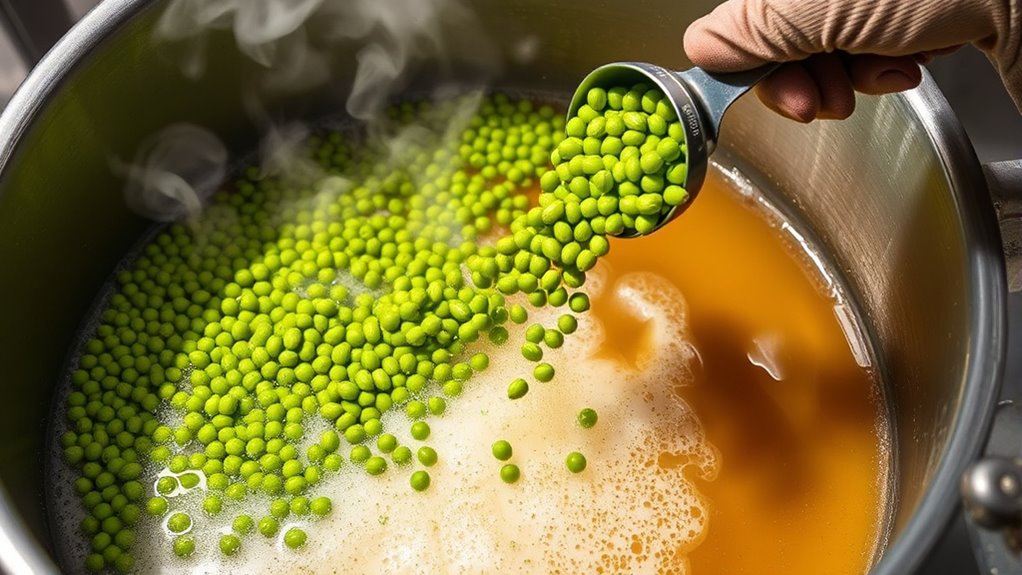
When you add hops early in the brewing process, you’re laying the groundwork for the beer’s bitterness.
Early hop additions, typically made at 60 minutes before the end of the boil, focus on maximizing bitterness through alpha acids. Using high-alpha hop varieties provides a clean bitterness while minimizing the quantity needed.
During boiling, the isomerization of these acids enhances balance with malt sweetness. A well-planned early addition strategy is essential for achieving desired bitterness levels and avoiding harsh flavors. Additionally, selecting the right yeast strains can help highlight hop flavors in your final brew.
Isomerization during boiling creates harmony between bitterness and malt sweetness, ensuring a smooth flavor profile in your brew.
Opt for boil hops carefully to create a smooth foundation for your homebrew beer.
Helpful Hints:
- Choose high-alpha varieties.
- Monitor boil time closely.
Mid-Boil Additions: Enhancing Flavor Complexity
Mid-boil hop additions play an essential role in shaping the flavor profile of your homebrew.
These additions, typically made with 15 to 30 minutes left in the boil, enhance flavor complexity while maximizing hop aroma.
Consider these helpful hints:
- Combine varieties: Use a mix of hops to achieve diverse flavors, like grapefruit or herbal notes, that enrich your beer profile.
- Balance bitterness: Mid-boil additions can create a desirable bitterness level, complementing late-hop additions.
- Experiment: Try different hop varieties and timings to refine your recipe for specific beer styles and unique hop character.
Additionally, adding hops during secondary fermentation can further enhance the aroma and flavor profile of your brew.
Late Hop Additions: Maximizing Aroma
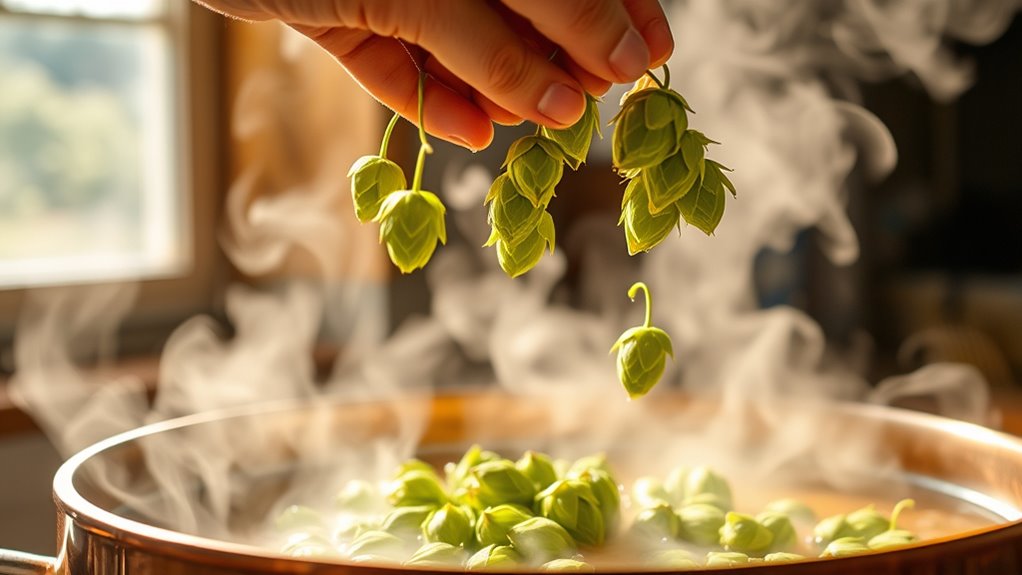
Late hop additions are essential for enhancing the aroma of your homebrew, as they allow you to capture the full essence of hop varieties.
By adding hops within the last 15 minutes of boiling, you preserve volatile oils, intensifying hop aroma without greatly increasing bitterness.
Adding hops in the final 15 minutes of boiling captures essential oils, boosting aroma while minimizing bitterness.
Adding hops at flameout can also contribute both bitterness and aroma, as alpha acids continue to isomerize.
Consider combining late additions with dry hopping for an amplified aroma.
Using innovative techniques like whirlpool hopping can further enhance your brew, resulting in a more dynamic and fragrant beer that highlights the unique characteristics of your chosen hops.
Whirlpool Hopping Techniques
Whirlpool hopping is a technique that allows you to extract maximum hop aroma while minimizing bitterness, making it a valuable addition to your homebrewing process.
To master this method, consider these helpful hints:
- Temperature Control: Aim for 5 to 30 minutes at specific temperatures to enhance aroma oils without adding bitterness.
- Lid On: Always cover the kettle during the whirlpool to prevent DMS and airborne contaminants.
- Style Selection: Use this technique for hoppy beers like Pale Ales and IPAs, where aroma is essential.
Combining whirlpool hopping with dry hopping can further elevate your beer’s aromatic profile, especially when using characteristic American hop varieties to maximize flavor potential.
The Role of Dry Hopping in Flavor Development
Dry hopping plays an essential role in flavor development, especially in hoppy beer styles like IPAs. By adding hops post-primary fermentation, you enhance hop flavors and aroma extraction.
Start with your first dry hop addition around day 6 or 7, maintaining an ideal dry hopping temperature of 68-70°F to maximize aroma. Consider a common rate of 0.5 to 1.5 ounces per gallon, adjusting for your desired hoppiness.
To deepen the aroma, explore multistage dry hopping by adding hops at different intervals. This technique benefits from yeast activity, resulting in a more complex final product.
Helpful Hints:
- Experiment with timing.
- Monitor fermentation temperature.
Experimenting With Different Hop Varieties
Experimenting with different hop varieties opens up a world of possibilities for homebrewers looking to craft unique and flavorful beers.
To enhance your beer recipe, consider these helpful hints:
- Combine hop varieties like Simcoe and Amarillo, or Citra and Centennial, to create depth in your flavor profile.
- Utilize dry hopping rates between 0.25 to 1.5 oz/gal, with 0.5 oz/gal typically yielding ideal aromatics in hoppy beer.
- Understand the bitterness levels of each hop variety, as high-alpha hops provide clean bitterness while low-alpha hops contribute a rounded texture.
Additionally, buying hops in bulk can help ensure you have a variety of hop varieties on hand, allowing for more experimentation without the worry of running out. Innovate and discover the distinct characteristics of each hop for a personalized brew.
Evaluating the Impact of Hop Addition Timing
When it comes to brewing beer, the timing of hop additions can considerably shape the final product’s flavor, aroma, and bitterness. Early additions, like those at 60 minutes, boost bitterness, while late additions, especially at 0-10 minutes, enhance aroma.
Mid-boil additions around 30 minutes provide a balance, delivering herbal and spicy notes. Experimenting with hop timing reveals that traditional schedules are evolving; brewers now embrace flameout and dry hopping for more vibrant hop character. Understanding the impact of sulfate-to-chloride ratio in your water chemistry can also further influence the overall hop expression in your brew.
Remember, different hop varieties impact flavor and aroma differently, so adjust your approach based on the hops you choose.
Helpful Hints
- Explore various addition times.
- Note flavor changes with each technique.
- Document your findings for future brews.
Tips for Refining Your Hop Schedule
Refining your hop schedule is key to achieving a balanced and flavorful beer. To master the timing of hop additions, consider these helpful hints:
- Categorize your additions: Use bittering hops during the boil (60+ minutes), flavorful hops (15-30 minutes), and aroma hops (0-10 minutes) to control bitterness without sacrificing flavor.
- Implement first wort hopping: This technique adds hops during wort drainage, enhancing bitterness while preserving hop compounds.
- Dry hop wisely: Introduce dry hopping post-fermentation, ideally on days 6-7, to capture vibrant aromas without boosting bitterness.
- Explore different filtering options: Utilizing the best hop filter screens can significantly improve the clarity and quality of your brew by effectively separating hop particles from the final product.
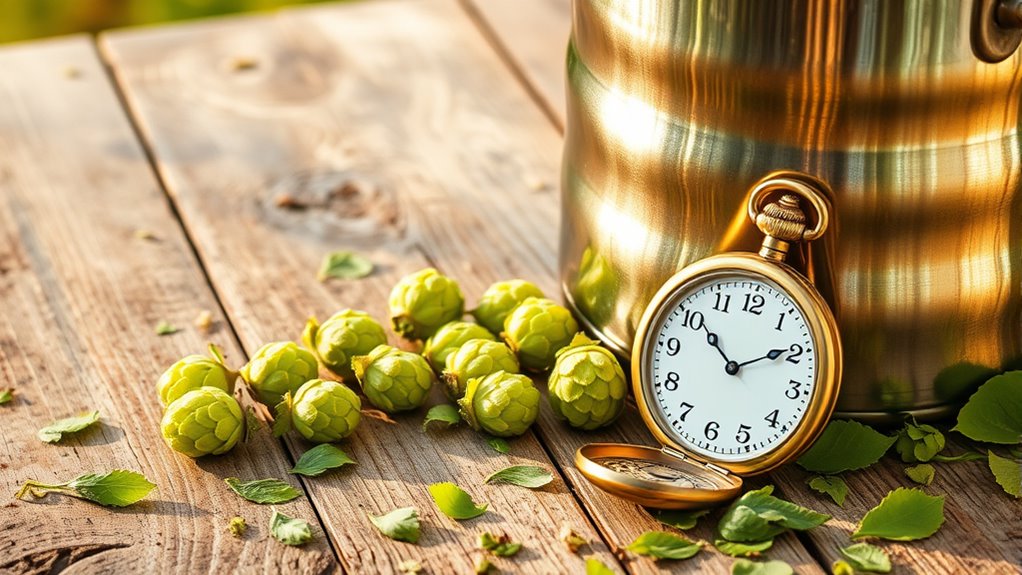
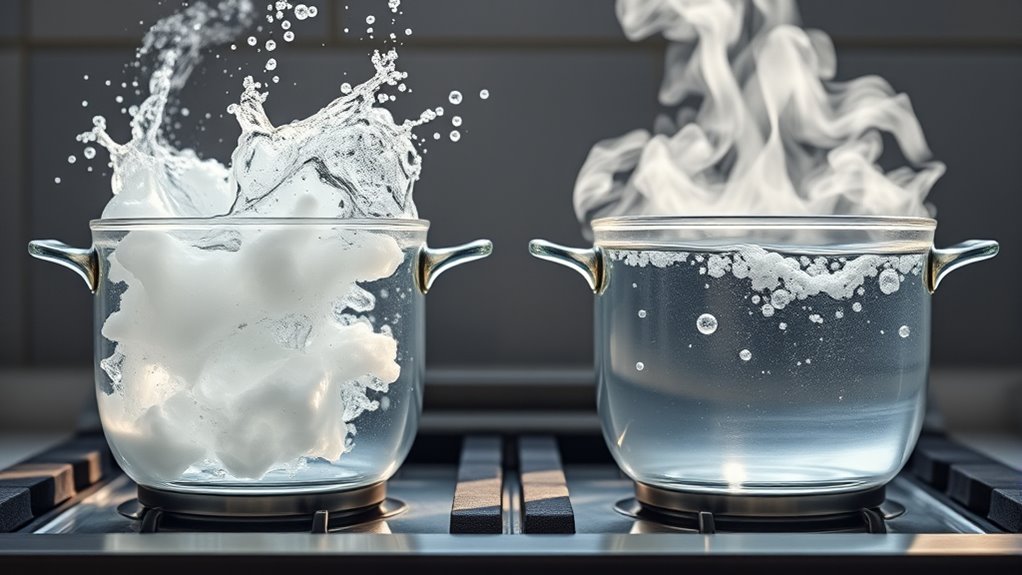
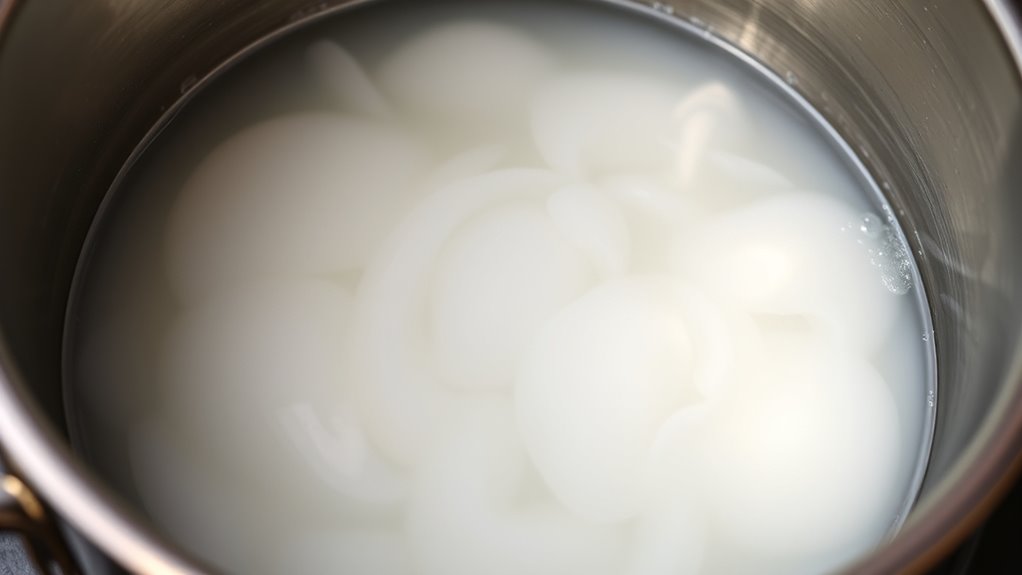
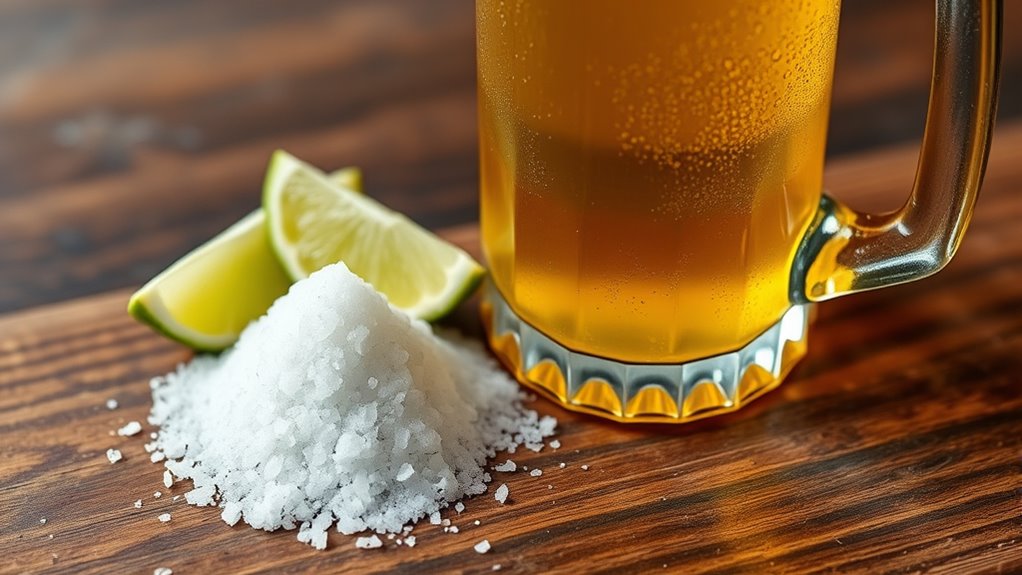
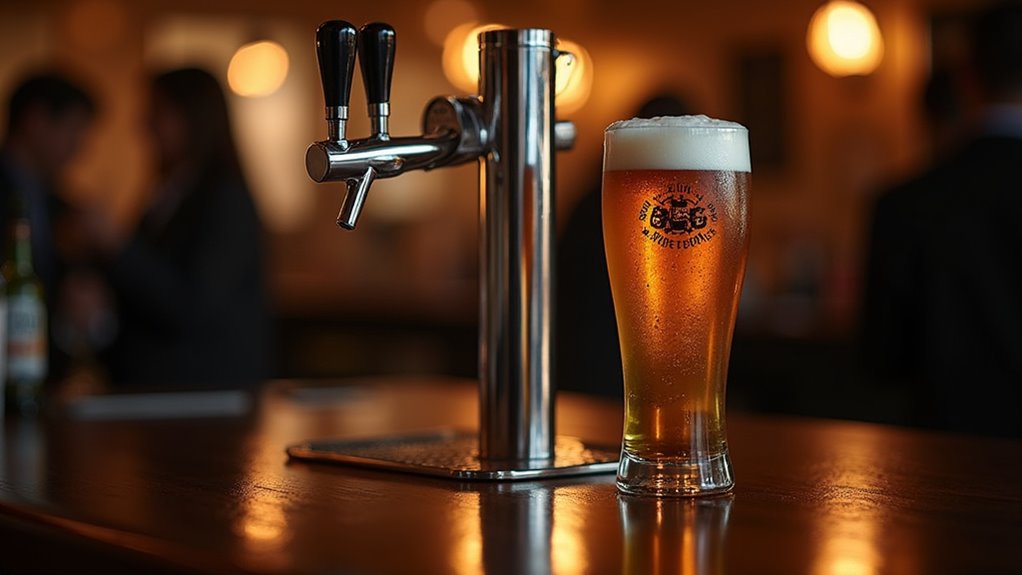
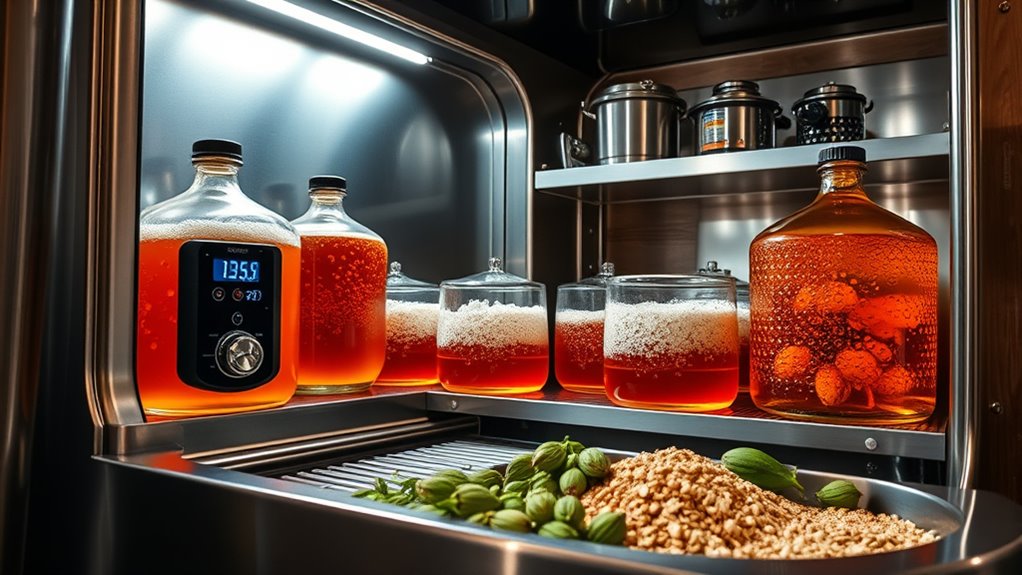
1 comment
Comments are closed.